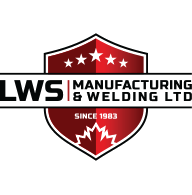Types of Metal Forming Processes
Metal forming is a type of fabrication process that creates structural parts or complex components out of metal sheets or tubing. The purpose of the metal forming process is to bend or otherwise shape raw metal into a desired geometric shape, creating components for a variety of products and industries. This reshaping is achieved through a process known as plastic deformation. Plastic deformation permanently changes the shape of raw metal based on the amount of pressure or stress applied to it, shaping metal into a purpose-built component. As leading providers of shaping, fabrication, and welding services, the team at LWS Welding & Manufacturing understands how important metal forming is for many industries. That is why our team has provided an overview of the most common types of metal forming processes to help users understand how it can support their business.
Learn about the differences between welding vs. metal fabrication.
Common Metal Forming Processes
In metal fabrication and manufacturing, there are many different types of metal forming processes that are utilized for mass production. The most common types of metal forming processes include, but are not limited to:
Bending
A flexible process that utilizes a brake press or similar type of press machine. Bending fabrication involves forming a metal sheet by placing it over a die block that punch-presses the material. The die does not puncture the sheet, but it bends it based on the shape of the die. Bending can be further classified as swivel bending, rotary bending, or roll bending based on the die used.
Stretching
This forming process simultaneously stretches and bends metal over a die to form large, contoured, or complex components. This process is used to shape large parts that require sizeable and accurate radius bends while maintaining a smooth surface.
Deep Drawing
Deep drawing is a process where a metal sheet is clamped in place over a cavity-shaped die to form hollow components. The punch pushes downward, “drawing” it into a cavity and causing the metal sheet to take a shape like a cup. This process is typically used to create complex shapes for intricate components.
Roll Forming
Also known as “rolling”, roll forming is a process that shapes metal through a series of consecutive rollers. As the raw metal passes through these rollers, it is continuously flattened, formed, and bent into a desired shape. This process is often performed in stages, gradually forming the metal component until the desired cross-section is achieved.
To learn more about our metal forming, welding, and fabrication services, get in touch with the team at LWS Manufacturing & Welding. We can be reached through our online contact form or by phone at 604-854-1277 and are ready to assist you.




